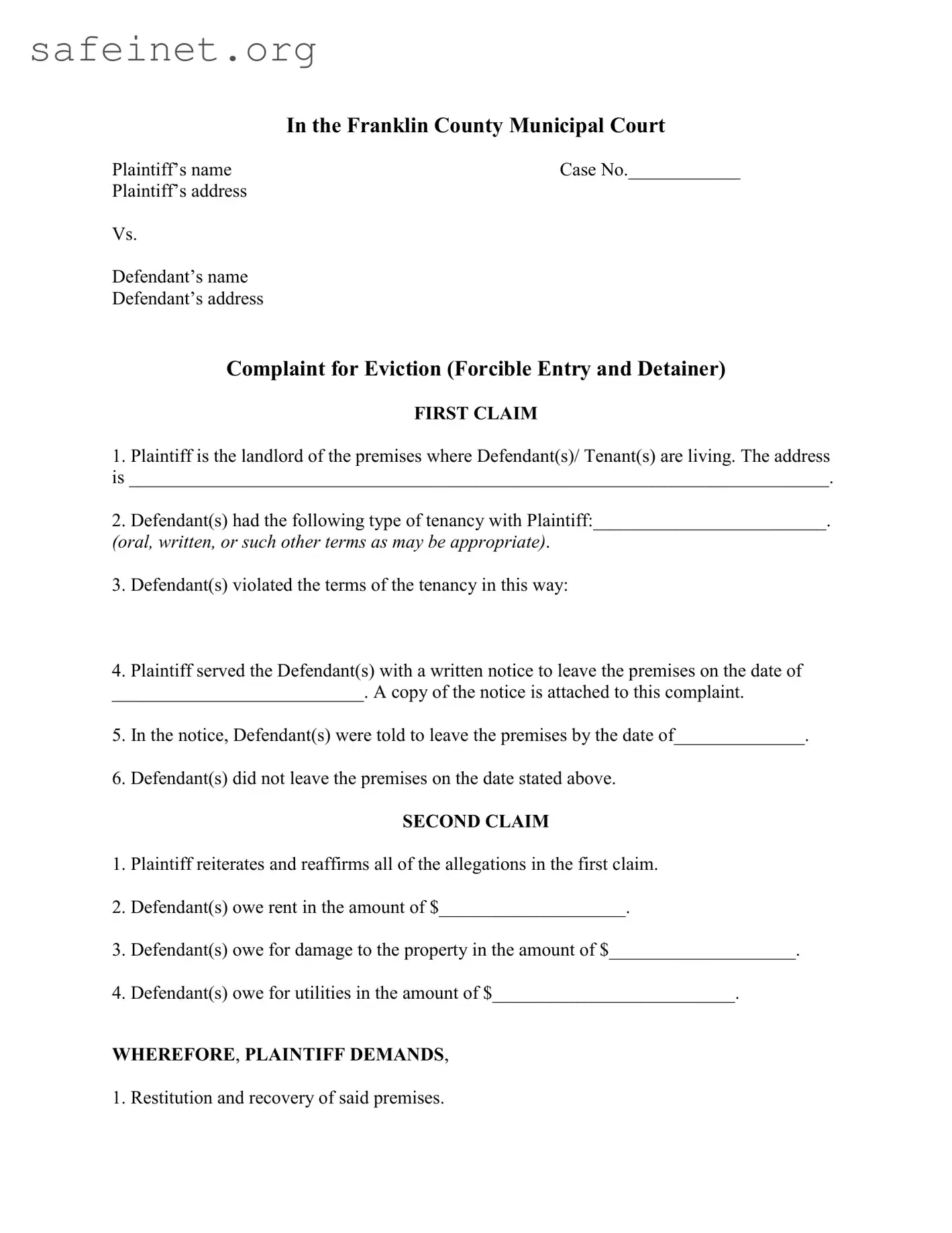|
In the Franklin County Municipal Court |
Plaintiff’s name |
Case No.____________ |
Plaintiff’s address |
|
Vs. |
|
Defendant’s name |
|
Defendant’s address |
|
Complaint for Eviction (Forcible Entry and Detainer)
FIRST CLAIM
1.Plaintiff is the landlord of the premises where Defendant(s)/ Tenant(s) are living. The address is ___________________________________________________________________________.
2.Defendant(s) had the following type of tenancy with Plaintiff:_________________________. (oral, written, or such other terms as may be appropriate).
3.Defendant(s) violated the terms of the tenancy in this way:
4.Plaintiff served the Defendant(s) with a written notice to leave the premises on the date of
___________________________. A copy of the notice is attached to this complaint.
5.In the notice, Defendant(s) were told to leave the premises by the date of______________.
6.Defendant(s) did not leave the premises on the date stated above.
SECOND CLAIM
1.Plaintiff reiterates and reaffirms all of the allegations in the first claim.
2.Defendant(s) owe rent in the amount of $____________________.
3.Defendant(s) owe for damage to the property in the amount of $____________________.
4.Defendant(s) owe for utilities in the amount of $__________________________.
WHEREFORE, PLAINTIFF DEMANDS,
1. Restitution and recovery of said premises.
2.Judgment for back rent, damages, late charges, and utilities in the amount of $_______________and costs and interest.
____________________________________________
SIGNATURE
_____________________________________________
NAME (PLEASE PRINT)
__________________________________________________
ADDRESS
__________________________________________________
CITY, STATE, ZIP CODE
__________________________________________________
TELEPHONE NUMBER
